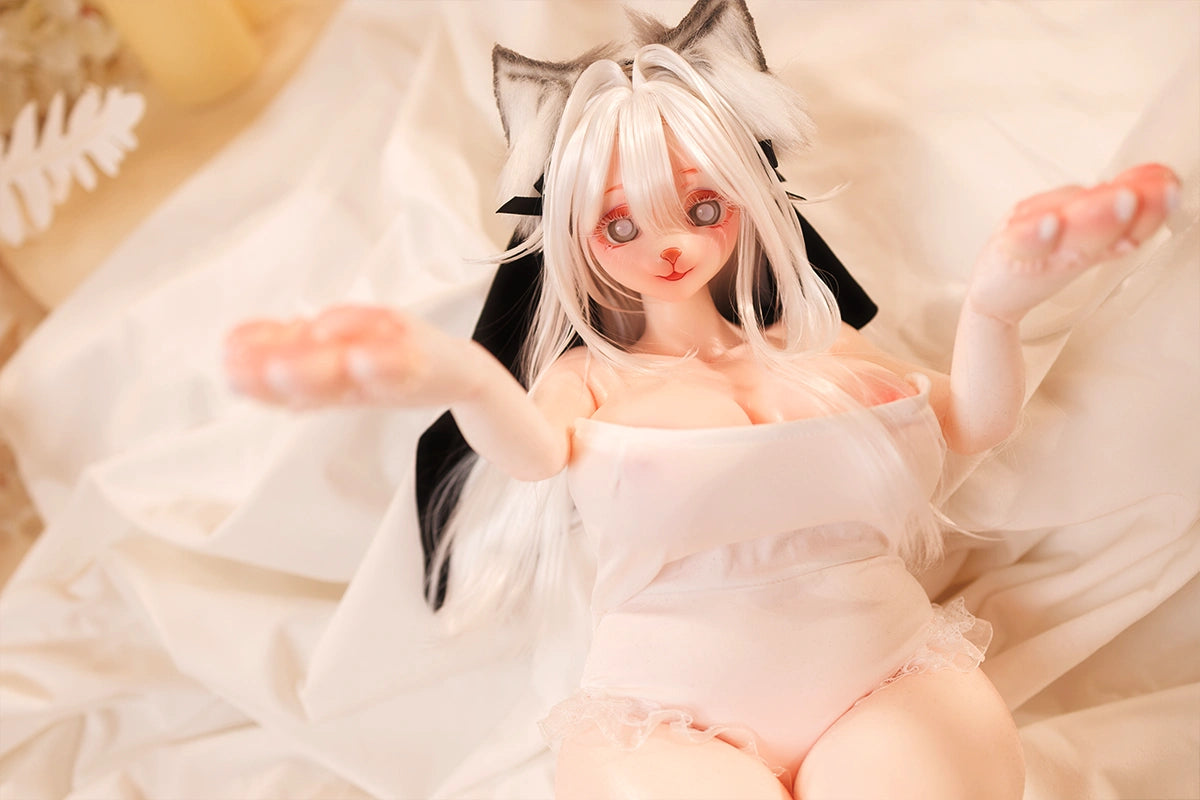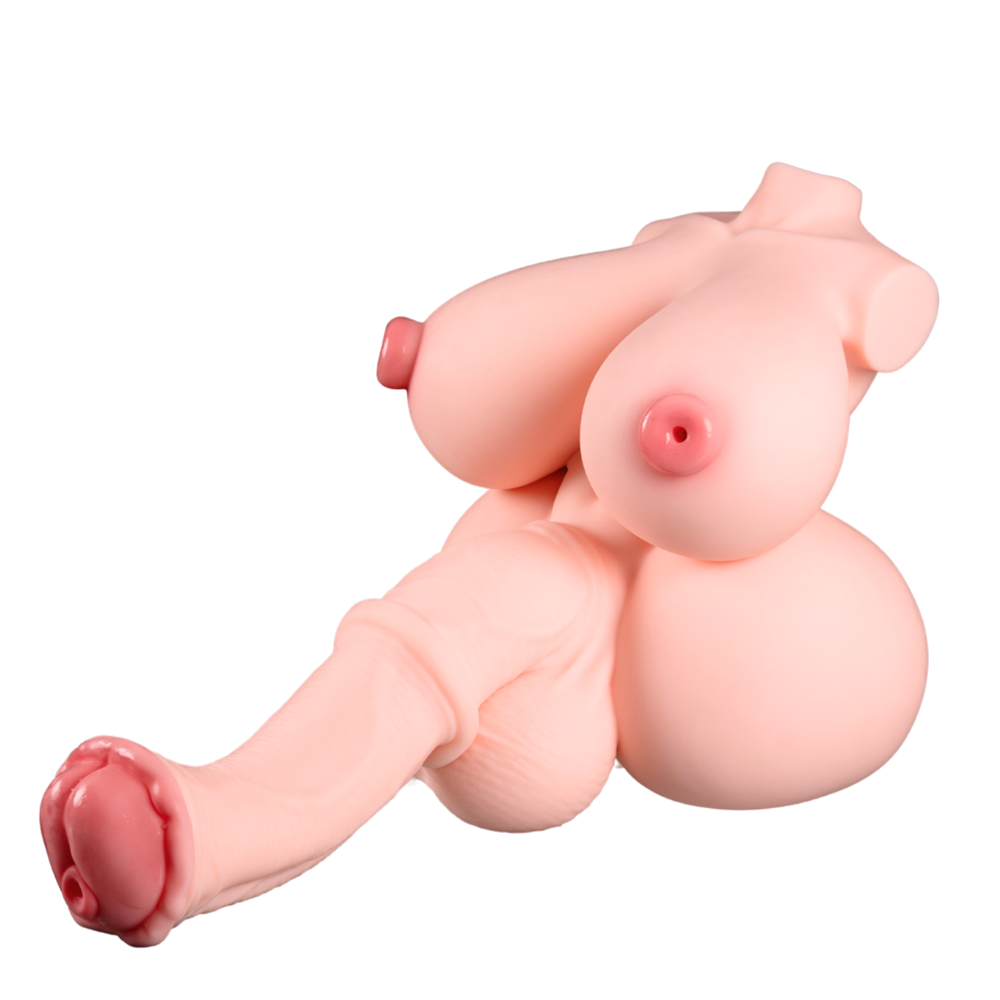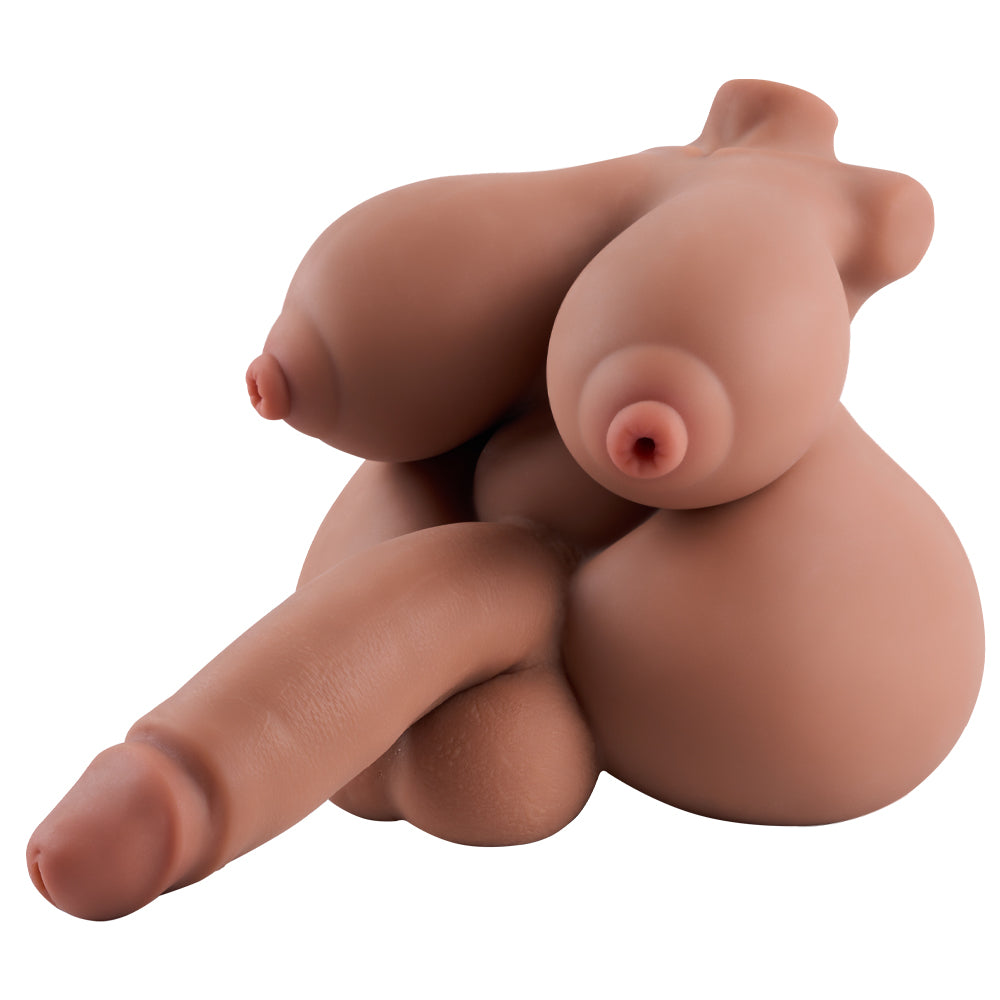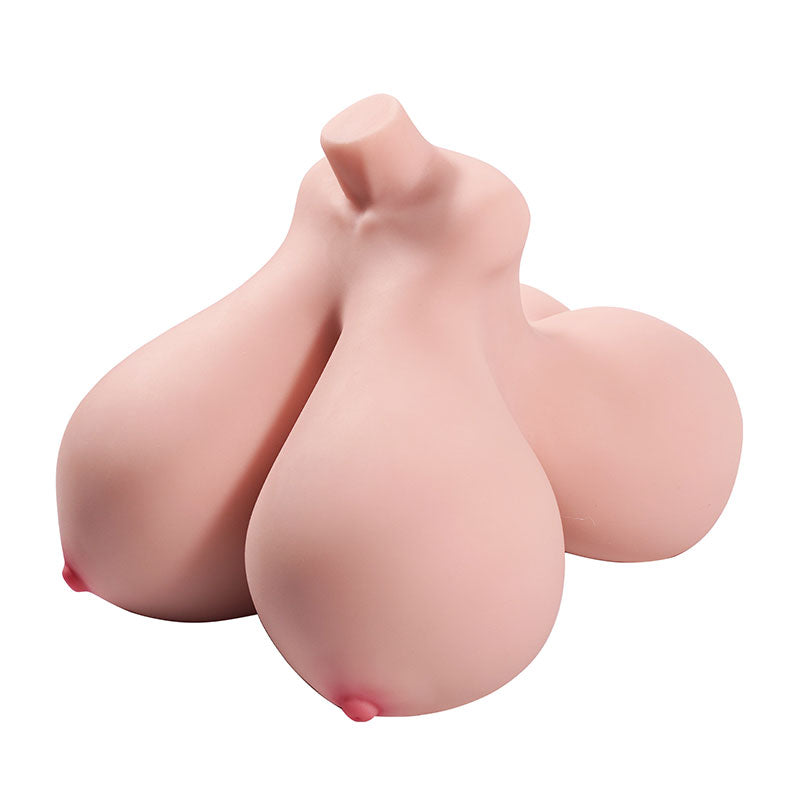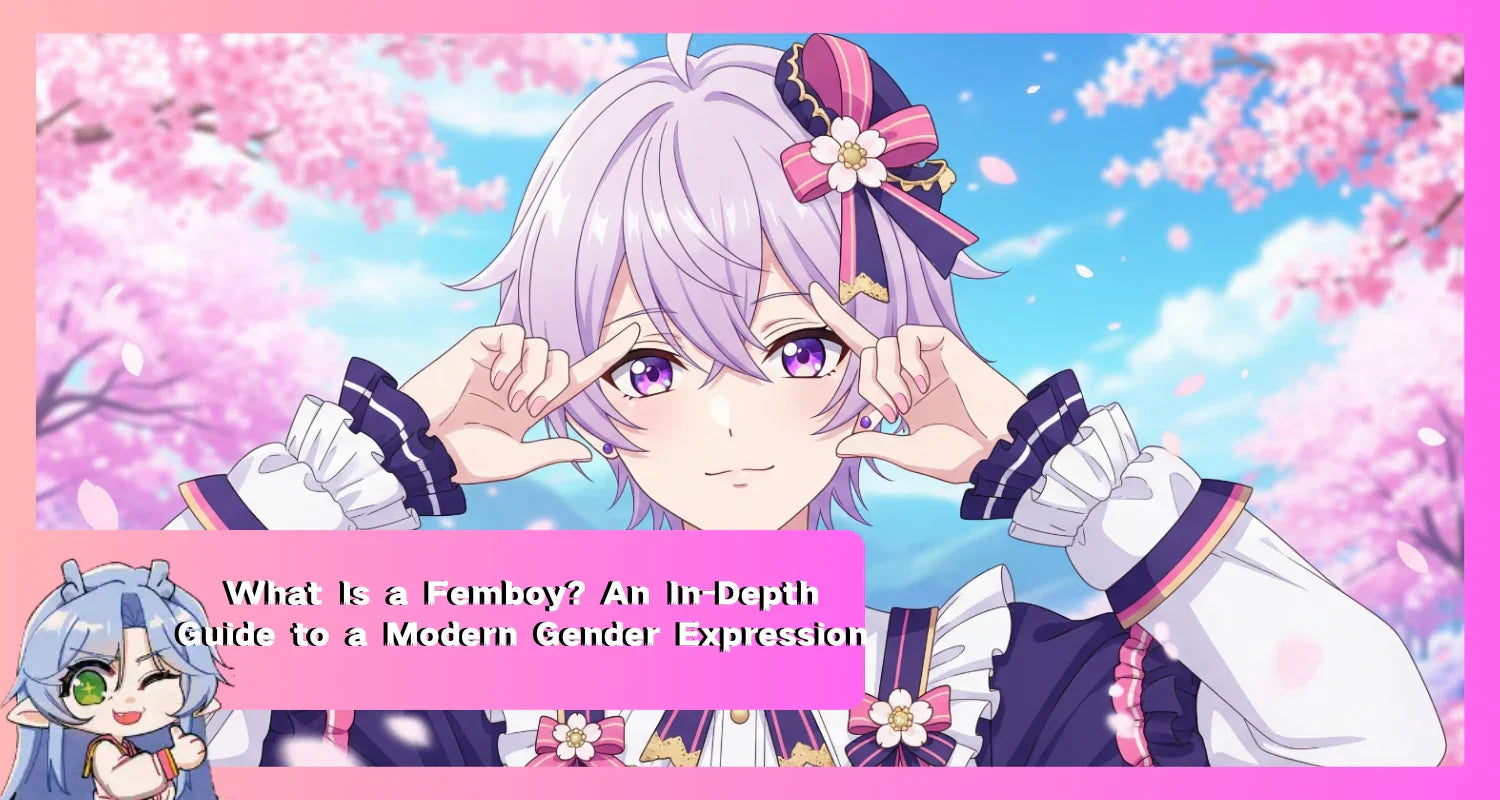What Is a Femboy? An In-Depth Guide to a Modern Gender Expression
Table of Contents
1.Untangling the Term: A Clear Definition of the Femboy Identity
2.The Femboy in History: From Ancient Roots to Internet Reclamation
3.The Femboy Aesthetic and Digital Subculture
4.The Anime Femboy and the Landscape of Desire
5.Frequently Asked Questions (FAQ)
Untangling the Term: A Clear Definition of the Femboy Identity
The word femboy has quickly become part of our modern vocabulary, mostly thanks to the internet. However, many people still misunderstand what it means. It represents an interesting and complex part of today's conversation about gender, pushing back against old rules and opening up new ways for people to be themselves. To really get what it's all about, we first need a clear definition that separates the femboy identity from other similar, but different, identities.
Beyond the Binary: Femboy as Gender Expression, Not Orientation
At its core, a femboy is typically a young man who expresses himself using traditionally feminine characteristics. This is about gender expression—how someone presents themselves through clothing, mannerisms, and style—and is separate from their gender identity (their internal sense of self) or sexual orientation (who they are attracted to). A femboy generally identifies as male but enjoys a feminine aesthetic, which can include wearing makeup, skirts, or adopting a softer demeanor. The identity is flexible, not defined by strict rules, and can be a full-time expression or an occasional exploration. Consequently, a femboy can have any sexual orientation, including straight, gay, bisexual, or asexual.

The popularity of the femboy identity, particularly on platforms like TikTok, reflects a broader cultural shift. It signals a growing comfort with decoupling biological sex from gender identity and expression. This allows individuals to construct identities that feel authentic, moving beyond rigid societal boxes. This phenomenon is less a fashion trend and more an indicator of evolving perspectives on gender.
A Matter of Identity: Femboy vs. Transgender and Cross-Dresser
It is crucial to distinguish the femboy identity from other forms of gender expression to be respectful and accurate.
·Femboy vs. Transgender: The key difference is gender identity. A femboy typically identifies as a boy or man who enjoys feminine expression. In contrast, a transgender woman is a woman who was assigned male at birth; her core identity is female. While some may transition from identifying as a femboy to a trans woman, the terms are not interchangeable. Misusing 'femboy' for a trans woman is misgendering and can be hurtful, especially since the term has been used as a slur against them.

·Femboy vs. Cross-Dresser: While cross-dressing is often part of the femboy aesthetic, the identity usually goes beyond just clothing to include mannerisms and a broader way of being. For others, cross-dressing can be a hobby, performance (like drag), or a fetish. For instance, transvestic disorder is a clinical diagnosis related to sexual arousal from cross-dressing that causes significant distress, which is distinct from the femboy identity's focus on self-expression.

The femboy identity challenges the societal tendency to equate male femininity with being gay or transgender, creating a space where a male identity and feminine expression can coexist.
|
Identity/Term |
Core Gender Identity |
Primary Motivation/Focus |
Common Misconception |
|
Femboy |
Male / Non-binary |
Self-expression of femininity, aesthetic, and personal comfort. |
"They are all gay or want to be women." |
|
Transgender Woman |
Female |
Aligning one's life, body, and social role with one's true gender identity. |
"They are just men in dresses." |
|
Cross-Dresser |
Typically Male |
Varies: hobby, performance (drag), fetish, comfort, self-expression. |
"All cross-dressers are gay or transgender." |
The Femboy in History: From Ancient Roots to Internet Reclamation
While the word femboy is new, the idea of male femininity has existed throughout human history. Understanding its dual history—the modern reclamation of the word and its ancient cultural precedents—provides a richer picture.
A Brief History of the Word 'Femboy'
The word "femboy" first appeared in the 1990s as an insult for feminine men, similar to slurs like "sissy." Its purpose was to enforce conventional masculinity by demeaning those who deviated from it. The word's transformation began in the early 2000s in online communities on platforms like 4chan and Reddit, where individuals embracing feminine expression gathered. In these digital spaces, the term was reappropriated by the very people it was meant to harm, stripping it of its negative power. The identity became mainstream in the early 2020s, largely due to TikTok's viral #femboyfriday trend, which normalized the aesthetic for a global audience.

Echoes of Male Femininity: Global and Historical Precedents
The modern femboy is part of a long, global history of gender non-conformity. Many cultures have recognized and even revered individuals who blend masculine and feminine traits, showing that rigid gender binaries are not universal.
·In the pre-colonial Philippines, the baklâ were men who expressed themselves in a feminine way and were seen as a natural "third gender".

·In ancient Japan, the onnagata in Kabuki theater were male actors who played female roles. They developed a deep understanding of femininity and performed it both on and off the stage.

·Indigenous cultures in the Pacific Islands have long respected figures like the māhū of Hawaii and the fa'afafine of Samoa. These were people assigned male at birth who were seen as having both male and female spirits and held important roles in their societies.

·In South Asia, the hijras have been a recognized third gender for thousands of years and are even mentioned in ancient Hindu texts.

·In 18th and 19th-century Europe, the "dandy" or "macaroni" was a man who wore very fancy, elaborate, and often feminized clothing to show he didn't conform to normal aristocratic standards.

These examples show that the strict gender roles of 20th-century Western society were more of a historical anomaly than a default. The rise of the femboy can be seen as a digitally-driven return to a more fluid and historically common expression of gender.
The Femboy Aesthetic and Digital Subculture
The femboy identity is defined as much by its visual aesthetic and online communities as by its core concepts. It is a subculture born and cultivated on the internet, with a specific visual language that signals belonging.
The Wardrobe and Look: Key Elements of Femboy Fashion
The femboy aesthetic is a curated mix of masculine and feminine styles, heavily influenced by digital media. While personal expression varies, a common look has emerged.
Key items often include:
·Skirts: Pleated mini-skirts, especially in plaid or solid colors that look like school uniforms, are very popular, as are tennis skirts.
·Thigh-High Socks: Striped or solid-colored thigh-highs are a core part of the look and are often worn with skirts or shorts.
·Oversized Hoodies and Crop Tops: These items create a nice contrast, mixing the casual, comfortable feel of masculine clothes with the more body-focused style of feminine tops.
·Accessories: Chokers, cat-ear headbands, and delicate jewelry are common accessories that add to the feminine and often "cute" or kawaii style.
·The Maid Outfit: This outfit became popular through cosplay and internet memes, especially one with the Animal Crossing character Raymond. The maid costume is now an iconic, though very specific, part of the femboy look.

This style gets a lot of its inspiration from anime femboy characters, the online e-kid and e-girl subcultures (which often feature heavy eyeliner and a blushed nose), and sometimes even goth fashion. The look that comes out of this mix is not just a random collection of clothes. It's a symbolic uniform that shows someone is part of a digital community, creating an immediate sense of connection for those who understand its visual style.
Digital Communities: Where the Femboy Identity Thrives
The femboy subculture was forged almost entirely in digital spaces. These platforms are where the identity is defined, debated, and shared.
·Reddit: Hosts a spectrum of communities, from supportive SFW subreddits like r/feminineboys to pornographic ones like r/FemBoys.
·TikTok: As a platform that is very visual and driven by trends, TikTok has been key in bringing the femboy look to a wider audience. Viral hashtags like #femboyfriday have created a lot of visibility and act as a digital stage for people to express themselves.
·Discord and Pinterest: These platforms facilitate closer community building and aesthetic curation through chat servers and collaborative mood boards.
·AI Chatbots: The emergence of AI femboy characters for roleplay further demonstrates the identity's deep roots in digital fantasy and interaction.
This digital-first nature makes the femboy identity globally accessible but also ties it to the pressures of online performance and hyper-sexualization.
The Anime Femboy and the Landscape of Desire
It is impossible to fully understand the modern femboy without analyzing its deep connections to Japanese anime and manga. This media landscape provided the visual blueprint for the aesthetic and created a complex space for exploring gender and desire.
The Otokonoko and the 'Trap': Deconstructing the Anime Femboy Trope
The anime femboy is a major cultural archetype, known in Japan as otokonoko (男の娘), or "male daughter." This genre focuses on attractive, feminine-presenting male characters who cross-dress. Historically, this archetype was associated with the controversial term 'trap,' which implies a character's appearance "traps" a heterosexual man into attraction. The term is now widely considered an offensive slur due to its use against transgender women.

Famous examples include Astolfo from the Fate series and Felix from Re:Zero. A significant evolution occurred with Bridget from Guilty Gear, who was initially a classic otokonoko character but later came out as a transgender woman in 2022. This was celebrated for bringing genuine trans representation to a trope often stuck in problematic gags.
Bringing the Digital Aesthetic to Life: The Femboy in Collectible Culture
The look of the anime femboy is very popular in adult-focused media, like hentai and pornography, which cater to specific sexual fantasies. In these spaces, you'll often find search terms like femboy nude and femboy blowjob, which point to a popular genre focused on young, feminine-looking males. This fantasy often includes an idealized body type, such as that of a big booty femboy, which has become a well-known meme and a desired look within the fandom.
This strong interest from fans doesn't just stay online; it has created a real-world market for merchandise that allows people to own a physical piece of the fantasy. This has led to unique partnerships between digital artists and specialized manufacturers who work together to create high-end collectible figures and dolls. These products are carefully designed to meet the specific tastes of the community.
A perfect example of this is the Akeno: Nyakumi Co-branding Hentai Figure, a special project between the 3D hentai animator Nyakumi and the manufacturer MRLSEXDOLL. The figure is made to directly appeal to the fantasies of hentai lovers. It features a "delicate anime figurine head," "soft jelly boobs," and a prominent "big ass," which are all details designed to bring the specific visual style of hentai into a physical form for a dedicated audience. This connection is made even stronger through community-focused marketing, like using Discord to talk directly with the fans who drive the demand for such products. This shows a full circle where a niche media style creates a fandom, which in turn creates a market for physical items that embody that style.
Frequently Asked Questions (FAQ)
Does being a femboy mean you are gay?
No. Being a femboy is a form of gender expression, which is about how you present yourself to the world. It is separate from sexual orientation (who you are attracted to). Femboys can be straight, gay, bisexual, pansexual, or hold any other sexual orientation.
Is it okay to call someone a 'femboy'?
It's complicated. The term began as a slur but has been reclaimed by many in the community as a positive identity. However, due to its history and its potential for misuse, particularly against transgender women, it can still be offensive. The best practice is to only use the term for people who self-identify as a femboy and are comfortable with it.
What is the 'Femboy Hooters' meme?
"Femboy Hooters" is a viral internet meme that originated on Twitter in 2019. It humorously imagines the Hooters restaurant chain being staffed by femboys in the iconic revealing uniforms. The meme plays on themes of sexual fantasy, humor, and the fetishization of the femboy aesthetic within online culture, but it is not a real establishment.
Where did the femboy aesthetic originate?
The modern femboy aesthetic is a fusion of several subcultures. Its primary influences are Japanese anime femboy characters (also known as otokonoko), the online e-kid/e-girl style (which emphasizes certain makeup and fashion choices), and elements from goth fashion. This distinctive look was codified and popularized on digital platforms like TikTok, Reddit, and Pinterest.
What is the difference between a femboy and a 'trap'?
'Femboy' is a term of gender expression and self-identification for feminine-presenting males. 'Trap' is a highly controversial and often offensive slang term, originating in anime fandom, used to describe a character whose feminine appearance is said to "trap" others into attraction. The term is widely considered a slur by the LGBTQ+ community, especially when used against trans women, and its use is strongly discouraged.
Reference list
Fiveable Library. (n.d.). Onnagata. Fiveable. Retrieved July 8, 2025, from https://library.fiveable.me/key-terms/introduction-to-comparative-literature/onnagata
Fandom contributors. (n.d.). Other: Otokonoko. The Dere Types Wiki. Retrieved July 8, 2025, from https://the-dere-types.fandom.com/wiki/Other:Otokonoko
Human Rights at UAB. (2018, October 29). India’s relationship with the third gender. University of Alabama at Birmingham. Retrieved July 8, 2025, from https://sites.uab.edu/humanrights/2018/10/29/indias-relationship-with-the-third-gender/
LGBTQIA Wiki contributors. (n.d.). Baklâ. LGBTQIA Wiki. Retrieved July 8, 2025, from https://lgbtqia.wiki/wiki/Bakl%C3%A2
Leonard, L. (2023, May 8). Hawaii’s māhū—and their ancient history—are finally re-embraced. National Geographic. Retrieved July 8, 2025, from https://www.nationalgeographic.com/premium/article/hawaii-mahu-ancient-history-finally-re-embraced
WebMD. (n.d.). What is transgender? WebMD. Retrieved July 8, 2025, from https://www.webmd.com/sex-relationships/what-is-transgender
Wikipedia contributors. (n.d.-a). Cross-dressing. In Wikipedia. Retrieved July 8, 2025, from https://en.wikipedia.org/wiki/Cross-dressing
Wikipedia contributors. (n.d.-b). Femboy. In Wikipedia. Retrieved July 8, 2025, from https://en.wikipedia.org/wiki/Femboy#:~:text=spelling%20for%20boy.-,Definitions,are%20regarded%20as%20conventionally%20feminine
Wikipedia contributors. (n.d.-c). Transgender. In WebMD. Retrieved July 8, 2025, from https://www.webmd.com/sex-relationships/what-is-transgender




